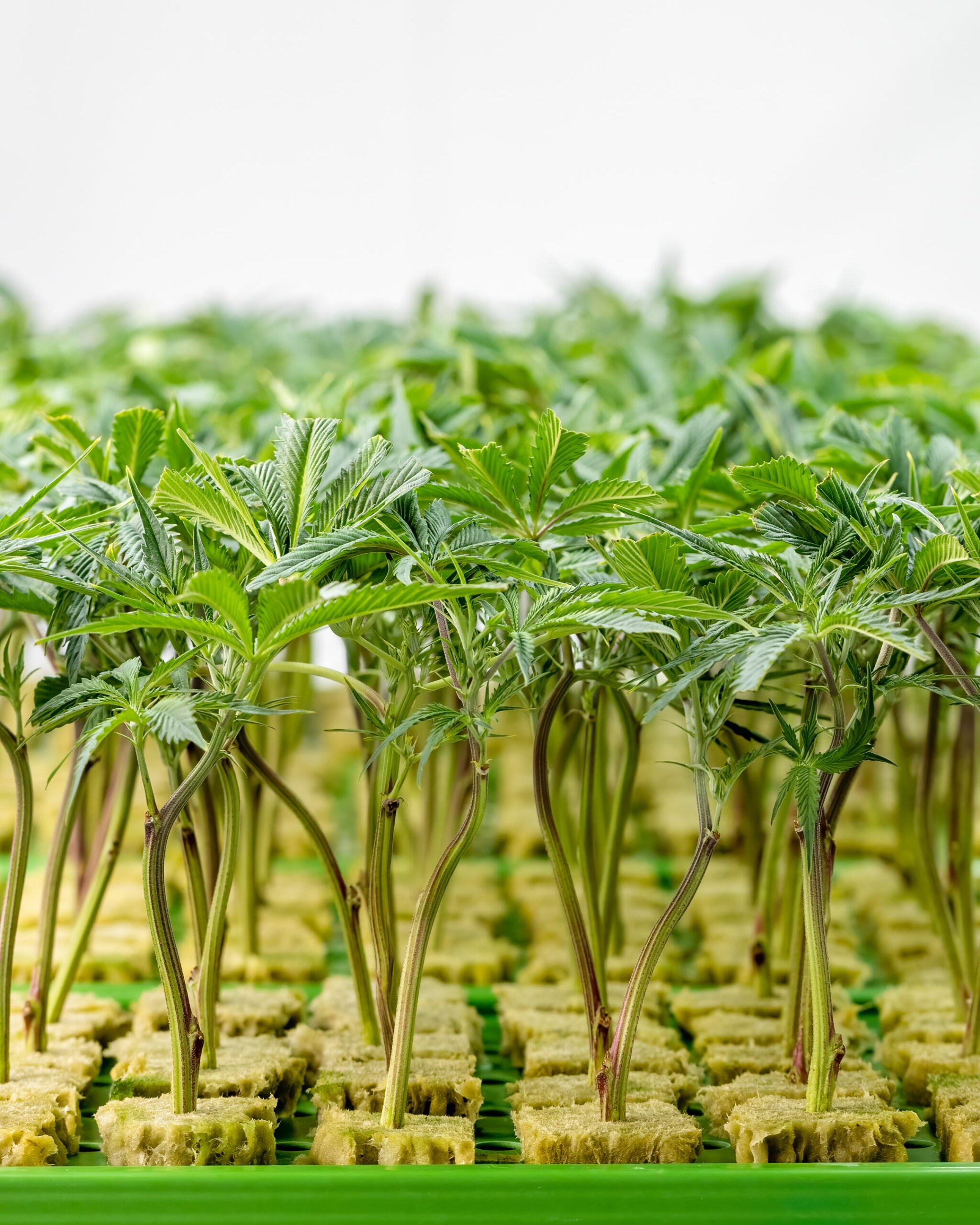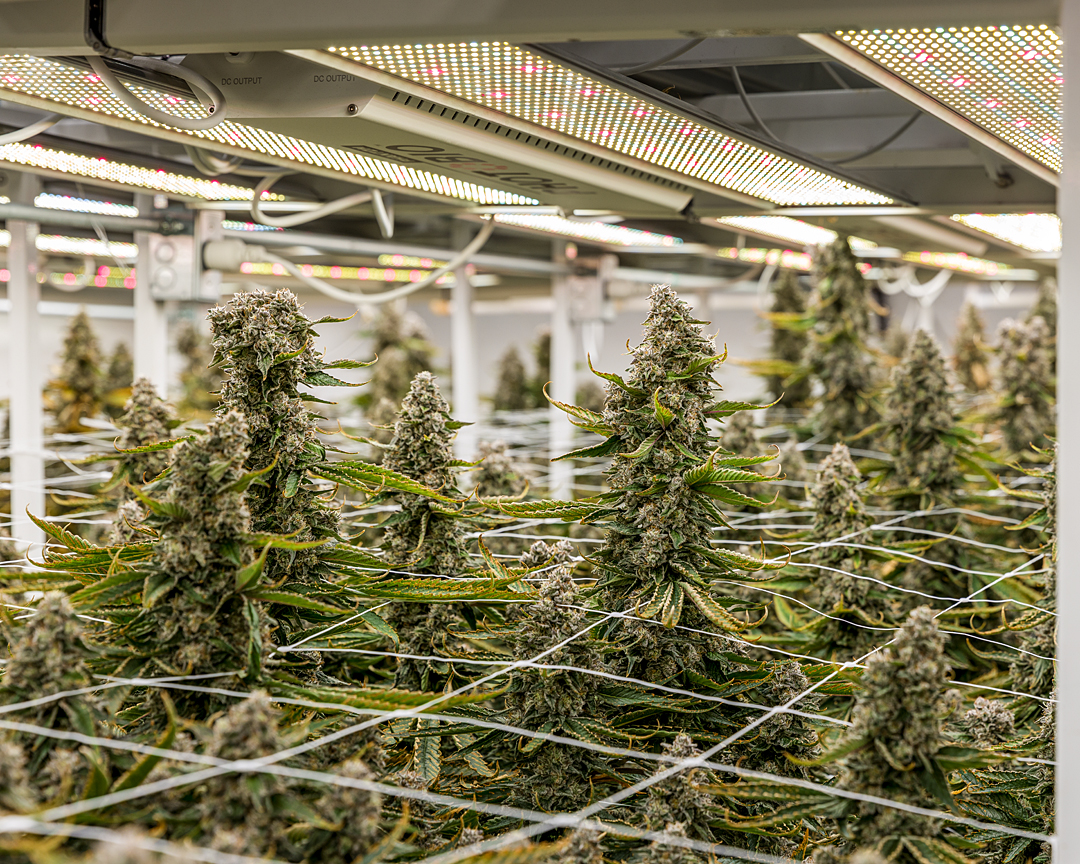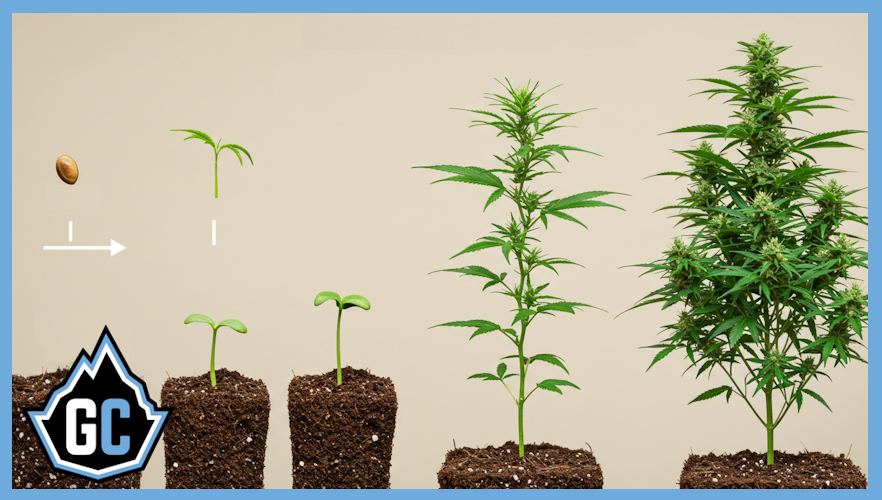Cannabis Plant Biology: From Seed to Flower
- Magic Plants
- January 2, 2025
- No Comments
Let’s Learn About Our Favorite Plant!
If anyone loves cannabis plants, it’s Glacier! Our knowledge runs deep and that’s how we’re able to produce such high quality, terpene rich products. Come along with us to learn exactly how the lifecycle looks for this amazing plant.
How Does Weed Grow Anyway?
The journey from a tiny cannabis seed to a mature, flowering plant is a fascinating process that combines precise environmental conditions, complex biological systems, and careful cultivation practices. Let’s explore each stage of growth and understand the science behind this remarkable plant’s development.
The Miracle of Germination
Every cannabis plant begins its life as a seed, waiting for the right conditions to spring into life. Small & Naraine’s 2016 research in “Size matters: evolution of large drug-producing plant domesticates” revealed that cannabis seeds require a delicate balance of conditions to successfully germinate. The seed needs warmth (20-25°C) and high humidity (70-90%) to activate its growth processes. Within the seed, hormones trigger the embryo to begin developing, sending out a tiny taproot that will anchor the plant and seek out water and nutrients.
Sponsored Content

The Vegetative Stage: Building the Foundation
Once the seedling emerges, it enters the vegetative stage – a period of rapid growth that sets the stage for future flowering success. Caplan et al. (2019) conducted extensive research on this critical phase, documenting how the plant develops its essential structures.
The root system comes first, with a primary taproot diving deep into the soil while lateral roots spread outward, creating an underground network that can extend up to 60cm deep in optimal conditions. This extensive root system serves two crucial purposes: anchoring the plant firmly in place and creating a vast network for nutrient absorption. Fascinatingly, cannabis roots form beneficial relationships with mycorrhizal fungi, dramatically increasing their ability to absorb nutrients from the soil.
Above ground, the plant focuses on building its energy-gathering machinery. Potter’s 2014 research shows how cannabis develops its characteristic fan leaves in opposing pairs, maximizing its ability to capture light. The spacing between nodes (where leaves emerge) is directly controlled by light intensity – a remarkable adaptation that allows the plant to optimize its growth based on environmental conditions.

The Transition: Preparing to Flower
One of the most crucial moments in a cannabis plant’s life cycle is the transition to flowering. Chandra et al. (2017) documented the subtle but important changes that signal this shift. The most visible change is in node arrangement – leaves begin to emerge in an alternating pattern rather than in opposite pairs. This seemingly simple change indicates a fundamental shift in the plant’s hormone balance and growth priorities.
Flowering: The Grand Finale
The flowering stage represents the culmination of the plant’s life cycle, and Shiponi & Bernstein’s 2021 research reveals the intricate details of this process. The shift to a 12/12 light cycle triggers a cascade of hormonal changes that transform the plant’s growth patterns. Energy that was previously directed toward leaf and stem growth now focuses on producing flowers.
During this stage, the plant undergoes its most remarkable transformation – the development of trichomes. Livingston et al. (2020) provided groundbreaking insights into these tiny chemical factories. These mushroom-shaped structures begin clear, gradually becoming cloudy as they fill with cannabinoids and terpenes. The change in trichome color from clear to cloudy to amber serves as a window into the chemical changes happening within – from THC development to its gradual conversion to CBN.
The Chemistry Behind the Magic
The real magic of cannabis happens at the molecular level. Rodziewicz et al. (2019) mapped out how the plant synthesizes its various compounds. Starting around week 3-4 of flowering, the plant begins producing CBGA, the precursor molecule from which THC, CBD, and other cannabinoids are derived. Environmental factors play a crucial role in this process – UV light exposure can increase resin production, while temperature fluctuations affect terpene development.

The Art and Science of Harvest Timing
Butterworth et al.’s 2020 research on harvest optimization demonstrates that timing is everything. The perfect harvest window occurs when about 70-90% of trichomes have turned cloudy, indicating peak THC content. This coincides with other visual cues: most pistils will have darkened, and the calyxes will be swollen to their maximum size.
This is a basic guide that touches on the essentials to get started learning about the cannabis grow cycle! If you’re interested in reading an advanced guide, let us know on Instagram or reach out via our Contact page.
Check out more cannabis science topics on our news blog and be sure to sign-up to the Glacier Canna Club newsletter.
References
- Small, E., & Naraine, S. G. U. (2016). Size matters: evolution of large drug-producing plant domesticates. Botanical Journal of the Linnean Society, 180(1), 1-33.
- Caplan, D., et al. (2019). Vegetative plant growth and nitrogen allocation in Cannabis sativa ‘Finola’ cultivation. Journal of Plant Nutrition, 42(7), 757-768.
- Potter, D. J. (2014). Cannabis Horticulture: The Indoor/Outdoor Medical Grower’s Bible. Quick American Archives.
- Chandra, S., et al. (2017). Cannabis cultivation: Methodological issues for obtaining medical-grade product. Epilepsy & Behavior, 70, 302-312.
- Shiponi, S., & Bernstein, N. (2021). The Cannabis Flowering Cycle: Environmental Factors and Key Developmental Processes. Frontiers in Plant Science, 12, 294.
- Livingston, S. J., et al. (2020). Cannabis Glandular Trichomes Alter Gene Expression and Produce Resin in Response to Changing UV Light Conditions. Frontiers in Plant Science, 11, 432.
- Rodziewicz, P., et al. (2019). Cannabinoid and Terpene Synthesis in Cannabis sativa L.: Molecular Aspects. International Journal of Molecular Sciences, 20(24), 6274.
- Butterworth, K. M., et al. (2020). Optimization of Cannabis Harvest Timing to Maximize CBD Production. Industrial Crops and Products, 158, 112958.
Understanding these biological processes isn’t just academic – it’s essential knowledge for anyone involved in cannabis cultivation or interested in how this remarkable plant produces its valuable compounds. Each stage of growth builds upon the previous one, creating a complex but beautifully orchestrated journey from seed to harvest.


